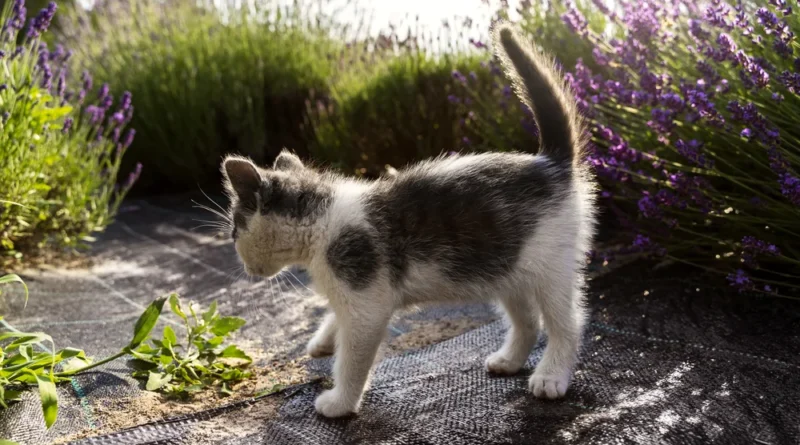Are Mums Toxic To Cats
What Are Mums?
Mums, also known as chrysanthemums, are popular plants often seen brightening up gardens, patios, and indoor spaces. These flowers come in various vibrant colors, ranging from bright yellows to deep purples, making them a go-to choice for seasonal décor, especially during fall. Their cheerful blooms bring warmth to any environment, making them irresistible for homeowners and garden enthusiasts alike. However, if you’re a cat owner, it’s important to understand the potential risks mums can pose to your furry friends.
While mums are beautiful, they also contain certain compounds that can be harmful to pets, especially cats. And since cats are naturally curious creatures who love exploring their surroundings, it’s essential to know whether these plants are safe to have around them.
Are Mums Toxic to Cats
The short answer is yes, mums can be toxic to cats. Chrysanthemums contain several substances that are harmful to felines, the most concerning being pyrethrins. Pyrethrins are naturally occurring chemicals that act as insecticides, helping mums defend themselves from pests. While this is great for keeping bugs away, it’s not so great if your cat decides to have a nibble.
In addition to pyrethrins, mums also contain sesquiterpene lactones and other irritating substances that can cause allergic reactions or even toxicity when ingested by cats. Every part of the mum plant—flowers, leaves, stems, and roots—contains these potentially harmful compounds, meaning that even a small bite could lead to issues.
However, it’s important to note that mums aren’t as deadly as some other plants (like lilies, for example), but they can still cause significant discomfort and health problems for your cat if ingested. The severity of the reaction depends on how much of the plant your cat consumes and your pet’s individual sensitivity.
Symptoms of Mum Poisoning in Cats
If your cat happens to nibble on a mum, it’s crucial to recognize the symptoms of poisoning quickly. The most common signs of mum poisoning in cats include:
- Vomiting: This is one of the first and most noticeable signs. If your cat is repeatedly vomiting after being around mums, this is a red flag.
- Diarrhea: Loose stools can indicate that your cat’s system is reacting to the toxic substances in mums.
- Drooling: Cats will often drool excessively when they’ve ingested something toxic.
- Loss of Appetite: If your usually enthusiastic eater suddenly refuses food, this could be a sign of mum poisoning.
- Lethargy: Cats may become unusually tired, withdrawn, or inactive if they’re feeling unwell after ingestion.
- Skin Irritation: In some cases, cats that rub against mums can develop dermatitis, a skin irritation that leads to redness, itching, or swelling.
In rare instances, cats may experience difficulty breathing or show signs of neurological distress, such as wobbling or confusion. If any of these severe symptoms occur, immediate veterinary attention is crucial.
What to Do if Your Cat Eats Mums
If you suspect your cat has ingested any part of a mum, don’t panic—but act quickly. Here are the steps you should follow:
- Remove the Plant: The first thing you should do is move the plant out of your cat’s reach to prevent further exposure. This might involve temporarily removing other potentially dangerous plants from your home or garden as well.
- Monitor Your Cat’s Symptoms: Keep a close eye on your cat’s behavior. Even if symptoms seem mild, it’s important to track any changes in their condition.
- Call Your Veterinarian: Reach out to your vet as soon as possible. Provide them with details about what happened, including how much of the plant your cat might have eaten and the symptoms they’re displaying. Your vet may ask you to bring your cat in for an examination, especially if vomiting or diarrhea is severe or prolonged.
- Follow Vet’s Instructions: Depending on the situation, your vet may offer different treatments. For mild cases, they might recommend monitoring your cat at home, while more serious cases could require professional intervention, such as fluid therapy or medications to soothe gastrointestinal distress.
- Do Not Induce Vomiting: Unless instructed by your vet, never attempt to induce vomiting in your cat. This could make things worse. Always leave medical treatments to professionals.
By acting quickly, you can minimize the risk to your cat and help them recover more comfortably.
Wanna Know: can dogs have popcorn
Safe Plant Alternatives to Mums
To avoid the risk of mum poisoning altogether, consider switching to pet-friendly plants that both you and your feline can enjoy. Here are a few options that are safe for cats:
- Spider Plants: Known for their air-purifying qualities and resilience, spider plants are not only safe for cats but also hard and easy to care for. Cats often find them fascinating to swat at, and they won’t cause any harm if a few leaves are chewed.
- Boston Ferns: With their lush, green fronds, Boston Ferns add a lovely natural touch to any home. They thrive in indirect sunlight and are non-toxic to cats, making them a great alternative.
- Cat Grass: As the name suggests, this plant is perfect for cats! Many felines love chewing on cat grass, and it’s actually good for their digestion. It’s also a great way to satisfy your cat’s craving for greenery without the risk of poisoning.
- Parlor Palms: Another safe choice, parlor palms are easy to care for and safe for curious cats. They make excellent houseplants with their long, graceful leaves.
Switching to any of these cat-friendly plants ensures you can still enjoy greenery in your home without worrying about your pet’s safety.
Conclusion
While mums are beautiful and festive, they can pose a serious risk to your cat’s health. If you’re a cat owner, it’s important to be mindful of the plants you have in your home and garden. Understanding the risks associated with mums, recognizing the symptoms of poisoning, and knowing how to respond can help keep your furry friend safe.

